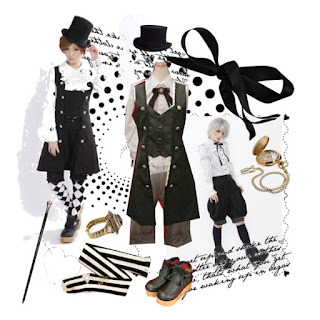
The working class, probably the most dominant influence on modern dress today.
Walk down the high street and look into any store, you will most likely find at least one piece of clothing directly relating to the chav subculture, if not a whole collection.
Modern culture is littered with trends, picked up and dropped off at the speed it takes to update your twitter feed, yet there is one subculture that has out lived them all.
The chav subculture seems to be a recurring dominance that the fashion industry has never seemed to get rid of and it wouldn't be the same without it.
Luxury sportswear, the sneaker renaissance, 'high-low' wardrobes, the 90's revival, all have been derived from the working class culture, and they represent possibly the largest style movement of modern life.
Walk down the high street and look into any store, you will most likely find at least one piece of clothing directly relating to the chav subculture, if not a whole collection.
Modern culture is littered with trends, picked up and dropped off at the speed it takes to update your twitter feed, yet there is one subculture that has out lived them all.
The chav subculture seems to be a recurring dominance that the fashion industry has never seemed to get rid of and it wouldn't be the same without it.
Luxury sportswear, the sneaker renaissance, 'high-low' wardrobes, the 90's revival, all have been derived from the working class culture, and they represent possibly the largest style movement of modern life.
For years, this culture have been bringing together top designer brands such as Moschino, Armani and Versace, with a wardrobe filled with sportswear such as Nike, Reebok, Fred Perry and Champion.
The jogging bottoms, hoodies, tracksuits and sneakers, are the wardrobe staples of which the poorer, urban communities wear as a part of their culture, but now the typical 'chav' subculture has evolved to include higher class brands.
Burberry is a key designer brand that faced significant identity crisis when their signature tartan print suddenly became popular amongst the British youth group known as 'chavs'. This almost caused big problems for Burberry as this was not the market they wanted to aim at. However, young people's desire for something new and radical business tactics allowed them to use this change of market to their advantage to avert total brand meltdown.

Never did we think that we would be taking fashion advice from a subculture predominantly known as lower class, nuisance causing urban youths, however many designers are now taking this as valuable inspiration for their collections.
The popularity of urban sportswear has rocketed, and this can be seen directly through the catwalk.
The popularity of urban sportswear has rocketed, and this can be seen directly through the catwalk.
Designers such as Gosha Rubchinskiy are now walking models at Paris Fashion Week with jeans tucked into their socks. Almost every major fashion house now have their own line of sneakers whilst a brand like Palace are making shell suits.
The chav culture is being redesigned and re modelled all over the world, by so many brands, so does this mean that chav no longer has such negative connotations is once used too hold? Because everyone is somehow bringing this style into their own wardrobes, does this mean the chav subculture is no longer one of its own. Is it just fashion?
By Megan Hinchcliffe
http://www.highsnobiety.com/2015/03/18/working-class-fashion-subculture/
http://www.endclothing.com/gb/adidas-x-palace-shell-track-top-az6589.html
http://en.academic.ru/dic.nsf/enwiki/464470



















